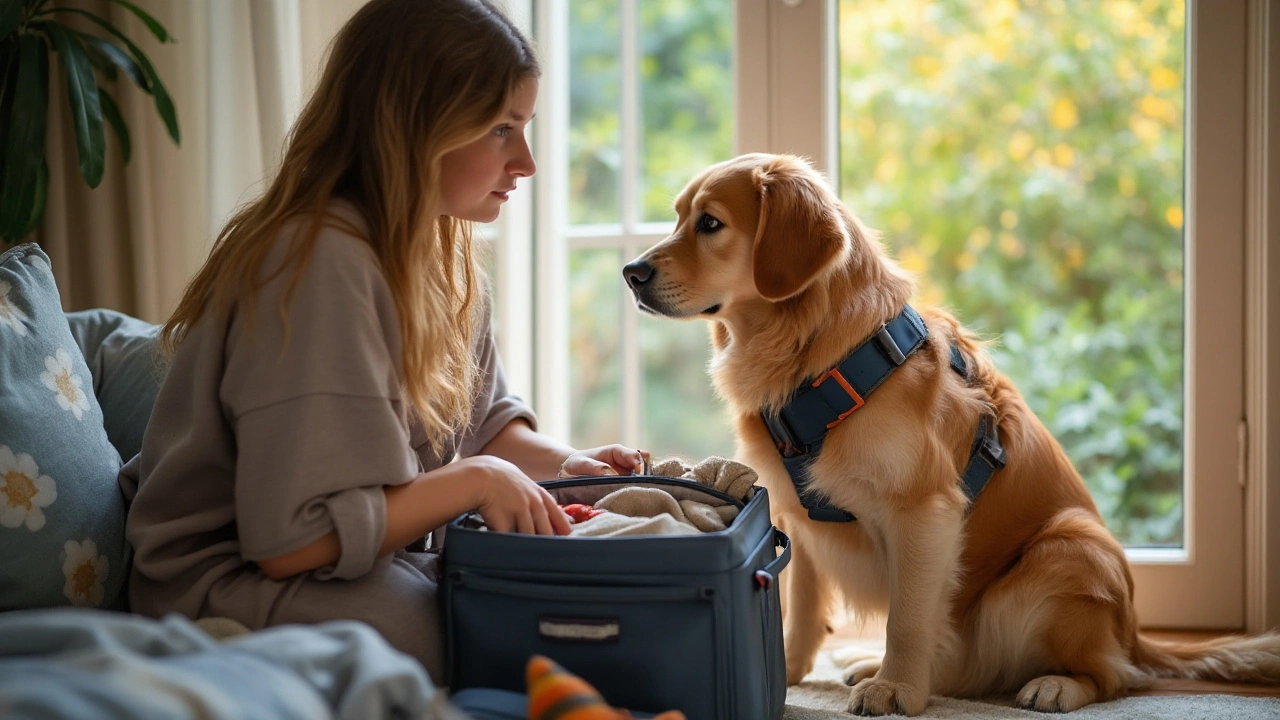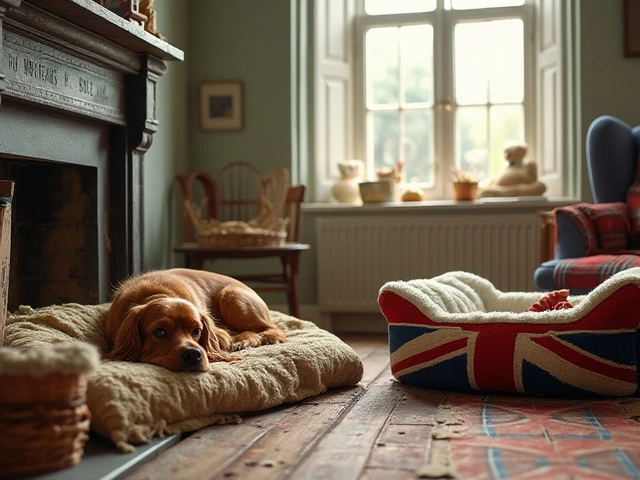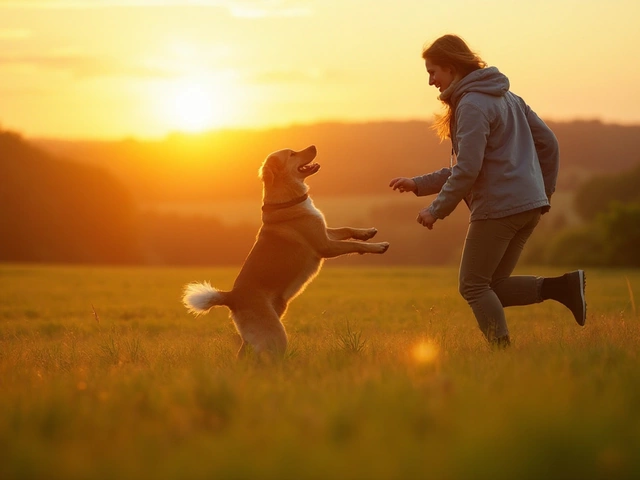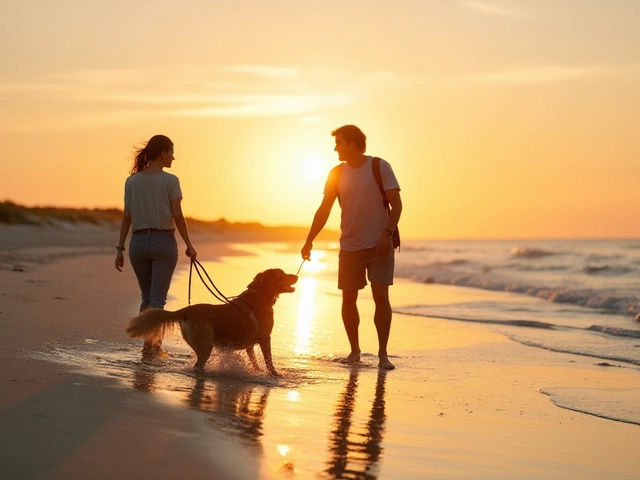Flying with your furry companion can be an adventure, but it does require some careful planning and preparation. Ensuring your dog's comfort and safety is key to a successful journey.
In this guide, we will explore a range of tips and insights to help you prepare your dog for air travel. From gathering the right supplies to understanding airline requirements, and ways to keep them calm, we've got you covered.
With the right information and preparation, both you and your dog can enjoy a peaceful and pleasant flight, turning what might be a stressful experience into a positive adventure.
- Preparing Your Dog for Air Travel
- Choosing the Right Supplies
- Regulations and Requirements
- Keeping Your Dog Calm During the Flight
Preparing Your Dog for Air Travel
Before you embark on air travel with your beloved canine, it is crucial to prepare them thoroughly to ensure a safe and comfortable journey. The experience of flying can be quite overwhelming for dogs, especially if it's their first time. Noise from the engines, confinement in a carrier, and the overall hustle and bustle of airports can trigger anxiety in your pet. It's essential to start early with the preparation process, allowing them to gradually acclimate to the idea of travel.
Begin by ensuring your dog's health is in top condition. A visit to the veterinarian is a must a few weeks before the trip. This helps to check that all vaccinations are up to date and addresses any health concerns. Be sure to discuss your travel plans with the vet. They might suggest specific medications to help with anxiety or motion sickness, depending on your dog's temperament and health history. Keep a copy of your dog's health certificate as airlines might require it.
“It's always better to be prepared when traveling with pets,” says Dr. Emma Lowe, a renowned veterinarian. “Ensuring your pet's health is good and discussing travel plans with your vet can prevent unforeseen issues.”
Practice makes perfect, and this is especially true for dogs adjusting to travel. Gradually introduce your dog to their travel carrier, making it a comfortable and inviting space. Place their favorite blanket or toy inside, and encourage them to spend time in it at home. This will help them associate the carrier with safety and comfort. Taking short car trips with your dog in the carrier can simulate the feeling of travel and ease them into the whole experience.
Acclimatizing your dog to the sounds and movements they'll encounter on a flight is another vital step. You can play recordings of airplane sounds at a low volume and slowly increase it over time as your dog becomes accustomed. This gentle exposure training helps lessen the shock of sudden loud noises during the flight. Coupled with positive reinforcement such as treats and praise, your dog will start to develop a tolerable reaction to these stimuli.
Getting your dog used to airport environments can be a part of your preparatory regime as well. If possible, take visits to the airport and let them experience the different smells and sights. However, keep your dog safely secured on a leash during these visits to ensure they don't escape in their curiosity or excitement. This exposure can desensitize them to the unfamiliar environment of the terminal on travel day, which will make the process less taxing.
Dietary considerations play a massive role in pre-travel preparation. Feeding should be planned strategically before travel to avoid digestive issues during the flight. It's generally advised to refrain from feeding your dog a big meal less than four hours before the flight. Instead, ensure they are well-hydrated, as cabin air can be quite dry. A light snack might help, but ensure it's something that won't upset their stomach during the journey.
Preparing your dog for air travel is a comprehensive process that combines health checks, behavioral conditioning, and environmental exposure. By investing time in this preparation, you not only make the flying experience more pleasant for your dog but also for yourself as you can have peace of mind knowing your furry friend is comfortable and secure.
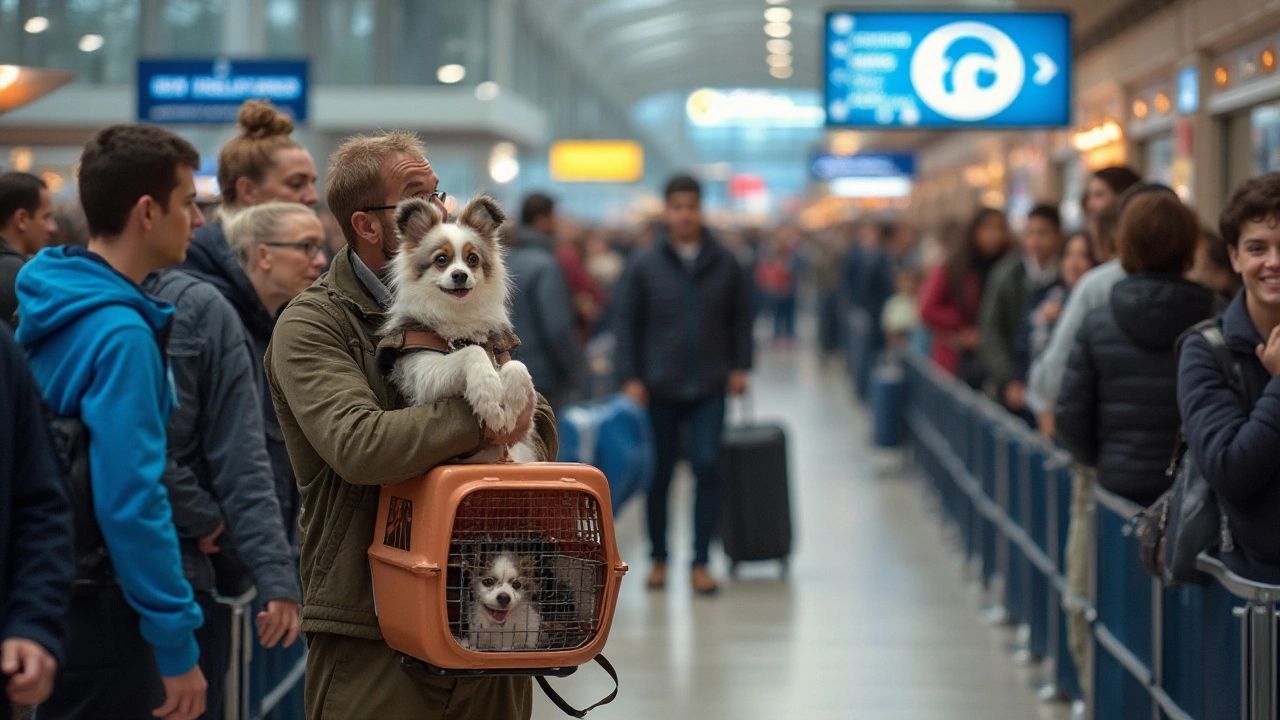
Choosing the Right Supplies
Deciding what to bring for your dog on a flight isn’t just important for their comfort but also crucial for meeting airline regulations. The right supplies can make a significant difference in how smooth the journey is. First on the list should be a sturdy, well-ventilated pet carrier. It should provide enough space for your dog to stand, turn around, and lie down comfortably. Airlines often have specific requirements regarding carrier sizes so make sure to check the specifics with your airline ahead of time. Remember, the carrier is not just a travel necessity; it's your dog's safe haven during the flight. To give your dog a bit of home comfort, consider lining the carrier with soft bedding or a favorite blanket from home to help them feel secure and at ease.
Another essential is a supply of food and water. While it's not advisable to feed your dog a full meal right before flying, having small snacks or their favorite treats at hand can help keep them calm. Collapsible bowls are a great solution for feeding and hydrating your pet on-the-go, as they are lightweight and easy to pack. Be sure to keep these essentials in your carry-on for easy access throughout the journey. And don't forget to pack some waste bags! Nobody wants any unexpected messes mid-flight.
Health and safety should also be top of mind. If your dog takes any medications, ensure you have enough for the duration of the trip plus a little extra in case of delays. Some pet owners find that calming supplements or pheromone sprays can help their pets relax during travel. You should discuss these options with your vet prior to traveling to determine what's best for your furry friend. According to the American Veterinary Medical Association, it’s often better to avoid sedatives unless absolutely necessary, as they can affect the body temperature of pets during a flight.
"Ensuring a stress-free travel experience for pets can greatly influence their behavior and health. Preparation is key," advises Dr. Jane Smith, a renowned veterinarian in pet travel care.
Lastly, having the right identification is critical. Make sure your dog’s collar has an up-to-date ID tag with your current contact information. Many owners also opt for microchipping as an added precaution since collars can occasionally become lost. Packing a travel bag with a copy of your dog's medical records, up-to-date vaccination records, and a recent photo can also be incredibly useful if unexpected circumstances arise.
With a little foresight and planning, choosing the right supplies not only ensures compliance with regulations but also prioritizes comfort and dog travel safety, paving the way for an enjoyable journey together.

Regulations and Requirements
When it comes to traveling with your furry friend, understanding airline regulations and requirements is not only crucial for compliance but also for ensuring the safety and comfort of your dog. Every airline has its own specific set of rules which can vary depending on whether your dog will be flying in the cabin with you or as cargo. Researching these regulations in advance is a must. For cabin travel, most airlines require that your pet has the ability to fit comfortably in a carrier that stows under the seat in front of you. This means taking precise measurements of your carrier and checking them against airline dimensions is vital.
For example, certain airlines might enforce a weight limit, typically not exceeding 20 pounds when combined with the carrier. If your dog is larger, they'll likely need to travel in the cargo hold, which has its own set of dog travel tips. Make sure that their carrier is airline-approved, ventilated well, and spacious enough for them to stand up and turn around. Aside from carrier requirements, most airlines ask for health certificates issued by a veterinarian. Such documentation generally needs to attest that your dog is healthy and up-to-date on vaccinations. Without these, you could risk being refused passage for your pet.
Beyond health records, if you're flying internationally, different countries might have specific requirements including quarantine regulations or even microchipping. For instance, flying to the EU requires pets to be microchipped before receiving their rabies vaccination, and they must have an EU Pet Passport. These legalities can be complex and take significant time to arrange. Thus, beginning preparations a few months ahead of time is highly recommended for international travel. It's always wise to double-check not only the destination country's rules but also the airline's policies to avoid surprises.
Here’s a quick breakdown of typical requirements you might encounter:
- Verification of adequate vaccinations and a general health certificate, often valid for only a set number of days before travel.
- Specific carrier size guidelines catering to the chosen airline.
- Possible quarantine requirements dependent on destinations, especially for international flights.
- Clearly labeled carriers with your dog's name and your contact information.
One interesting thing to bear in mind is that some airlines might allow or even prefer that passengers travel with emotional support animals or service dogs in the cabin, and they have their own set of criteria. According to the Federal Aviation Administration, “U.S. airlines must accept your service animal for travel, without charging anything extra.” However, verifying this information directly with your airline is a good practice to ensure no issues on day of travel.
Dr. Rachel Barrington, a known expert in veterinary travel, advises, "Preparedness is key. By understanding these parameters and setting ample time aside for each step, you can alleviate much of the potential stress both for yourself and for your flying with dogs experience."Awareness and understanding of these pet flight preparation requirements can indeed transform what may seem like a daunting experience into a well-coordinated plan, ensuring that you and your dog have the smoothest journey possible.
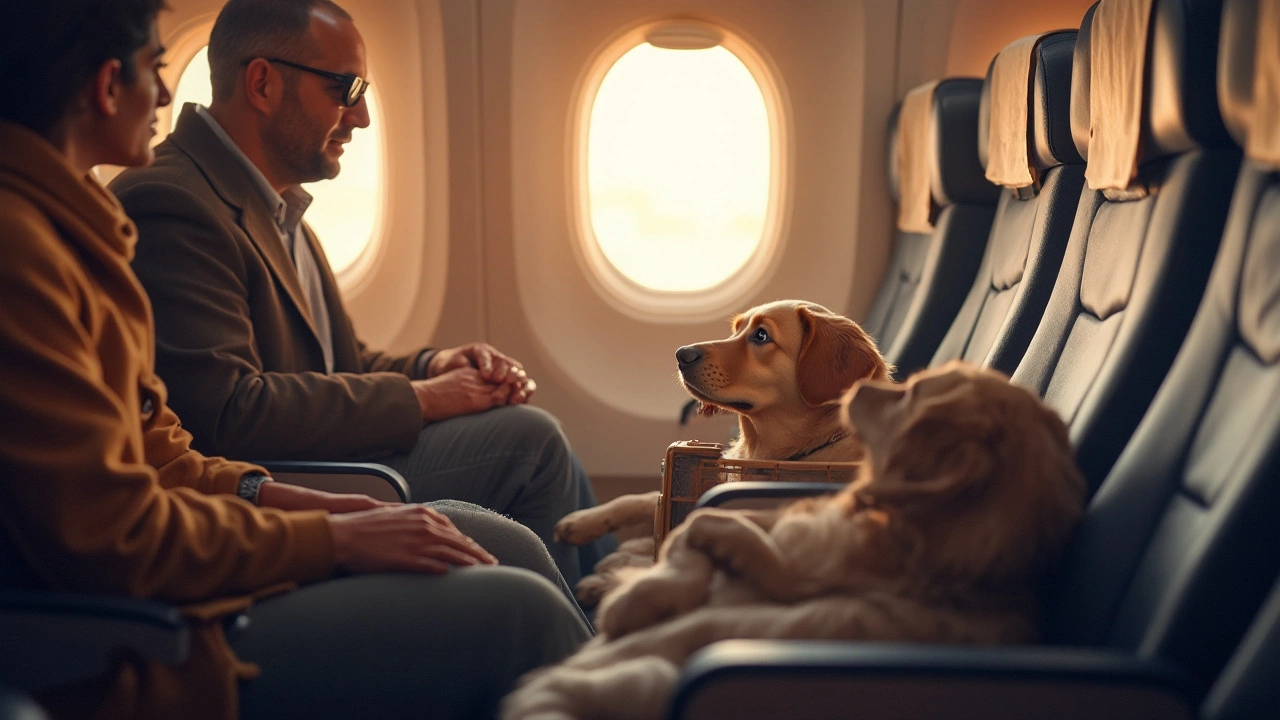
Keeping Your Dog Calm During the Flight
Traveling can be a daunting experience for dogs, especially when it involves air travel, where they may encounter strange environments and loud noises. Keeping your furry friend calm during the journey is crucial for their well-being. Begin by familiarizing your dog with their travel crate well ahead of time. Allowing them to explore it and spend time in it will help them see it as a safe space rather than a confined area. Comfort items, such as a favorite blanket or toy, can provide familiarity and reassurance. Pet travel tips often highlight the importance of keeping familiar scents nearby as they can have a dramatically calming effect on pets.
Providing physical exercise before the flight can also contribute greatly to your dog's calmness. A good, long walk or an energetic play session can help burn off any nervous energy. This method ensures your dog is more likely to rest during the flight. Some pet owners find that using anxiety wraps, like ThunderShirts, offers an added sense of security by applying gentle pressure, which can soothe anxiety.
There are products designed to help manage your dog’s stress levels, but always consult your veterinarian before using any medications or supplements. Some dogs benefit from natural remedies, such as pheromone sprays or calming treats that contain ingredients like chamomile or tryptophan.
According to Dr. Jessica Vogelsang, a renowned veterinarian, "Natural calming aids can be beneficial, but always test them in advance to gauge your dog's response."This insight emphasizes the need for trial runs as reactions can vary.
The role of the pet owner is also pivotal in keeping the dog calm. Dogs often mirror their owners' emotions, so remaining relaxed and cheerful can positively influence your pet's mood. You will also want to schedule your dog's meals carefully— a light meal a few hours before check-in can help prevent motion sickness without leaving them on an empty stomach. Remember to offer water regularly, as flying can be dehydrating.
If your dog starts showing signs of distress, try speaking to them in a calm, reassuring voice. Sometimes, giving them a chew toy or a kong packed with a small treat can provide a distraction. Some airlines allow owners to sit with their pets if onboard arrangements are made, offering direct reassurance and reducing stress. Staying informed about airline policies regarding pets can ensure unanticipated options remain available throughout your journey.

